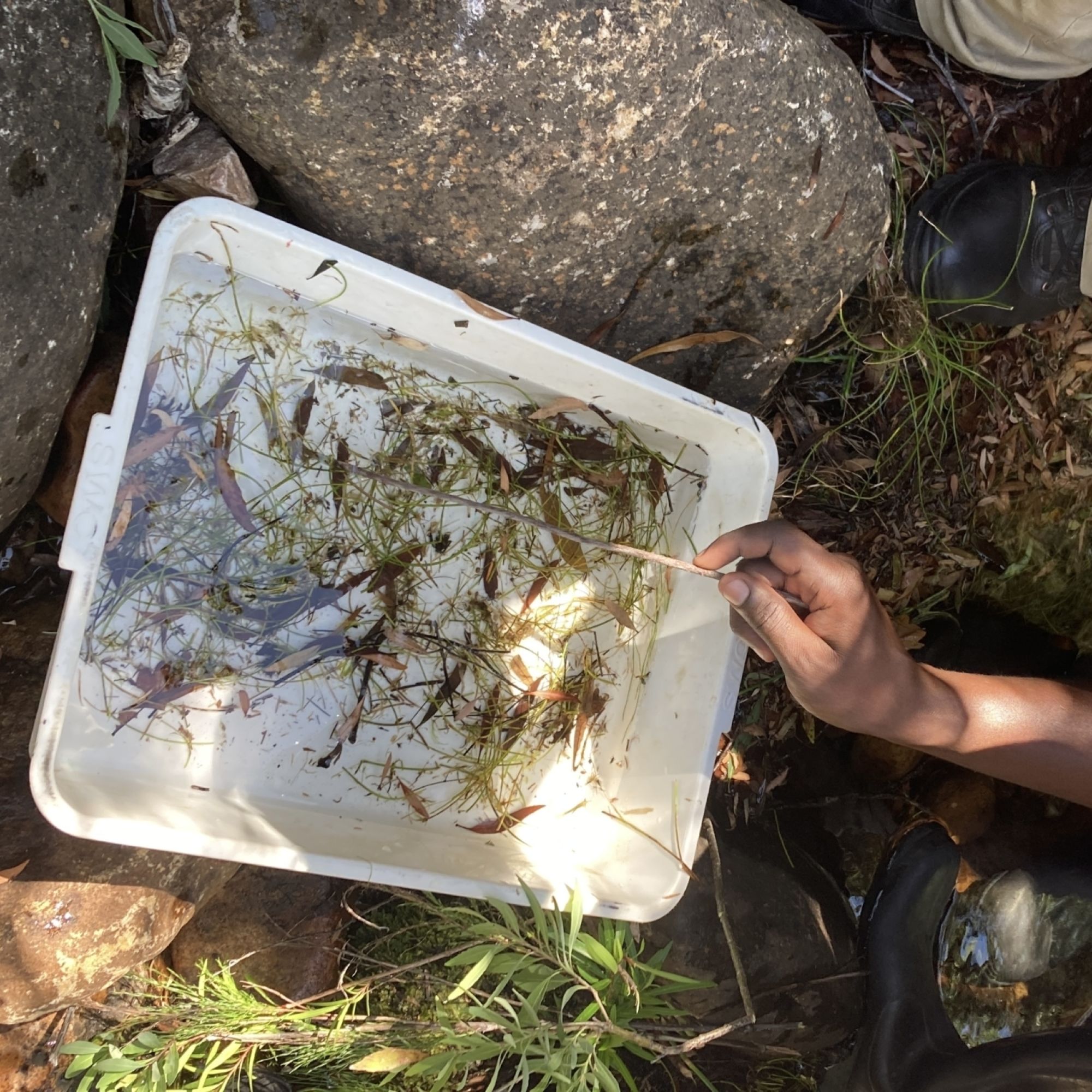Rapid Bioassessment Method for Rivers with a Focus on Rivers in the Jonkershoek Nature Reserve
In a water-scarce country such as South Africa, it is important to keep track of the health of freshwater systems and to conduct long-term monitoring of selected rivers and wetlands and their biodiversity. Keeping up with changes, impacts, and trends of these ecosystems is very important for the management and conservation of these systems.
Various techniques are put in place for the rapid bioassessment of rivers. One such method is the South African Scoring System version 5 (SASS 5). The SASS 5 is a rapid assessment method that is used to determine water quality and habitat diversity and it informs the overall health of a river system. This method involves various benthic macro-invertebrates which are used as bio-indicators of the river health.
Each taxon of the macro-invertebrates (up to family level) has been assigned a quality score, based on its susceptibility or resistance to pollution and perturbations. The lowest scores are assigned to the resistant taxa and the highest score to those susceptible to pollution and habitat disturbances.
CapeNature conducts a few long-term monitoring projects in various rivers in the Boland Mountain Complex, using SASS 5. One of these projects includes the Eerste River in the Jonkershoek Nature Reserve which is monitored seasonally to account for any natural variation in invertebrate communities associated with changes in weather throughout the year.
The uppermost site, where the Eerste River is still known as the Jonkershoek River, has no major impacts, as several high scoring macro-invertebrate individuals are usually found here. Although the mountain catchment and surrounding areas were recently disturbed by wildfires, some recovery in the riparian vegetation and instream invertebrate communities have been observed. Some macro-invertebrate taxa that have recently been observed in the autumn survey include individuals from the stonefly family Notonemouridae (high scoring and therefore very sensitive) and the damselfly family Coenagrionidae (lower scoring and therefore more tolerant). These insects are semi-aquatic, and they spend most of their life cycle in water during the developmental phases, before emerging as adults that fly around above the water and in terrestrial ecosystems.
These results confirm that this part of the river system is in very good health and has remained in this condition since monitoring started in 1991. CapeNature will continue to monitor this and other river systems over the long-term to ensure that these remain in good health as well as to track any effects that climate change may have on them. The public can also do their part by ensuring that they do not pollute any water sources and by reporting the pollution of water resources to the authorities.
Adult Sooty Threadtail damselfly (Elattoneura frenulata) collected at the Slang River near the Ruitersbos Nature Reserve in January 2022. Photo taken by Dr Marienne de Villiers.
Jeanne Gouws and Lonwabo Mkosi sampling the stones habitat at the uppermost Jonkershoek River site during the autumn 2022 survey. Photo taken by Zimasa Gibisela.

The vegetation sample in a white tray taken from the Olifants River at Wemmershoek Dam during November 2021. Photo taken by Lonwabo Mkosi.